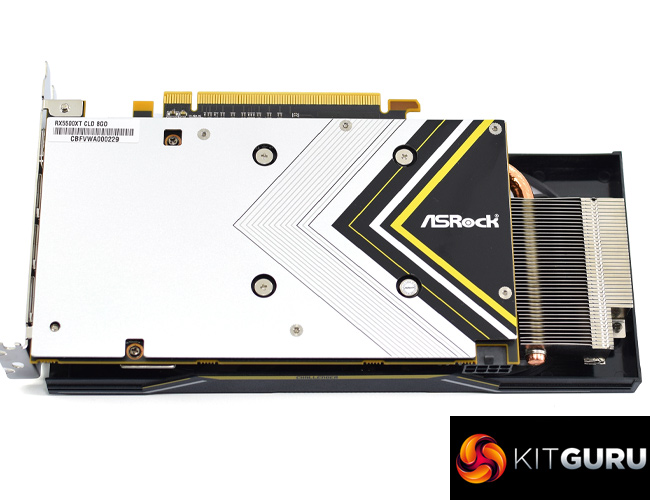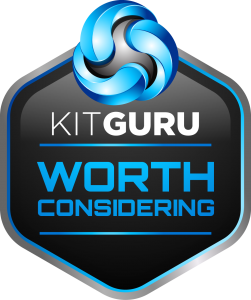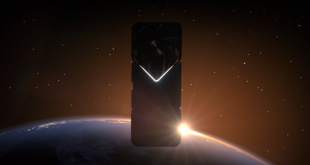Despite the fact that RX 5500 series was announced over two months ago, we've had to wait until today to get our first look at the Navi 14-based RX 5500 XT. In this review, we have assessed the 8GB ASRock Challenger model, but if you want to see our review of the 4GB Sapphire Pulse, head over HERE.
If we look first at the card's overall performance, the RX 5500 XT GPU slots in very close to the GTX 1650 SUPER, which was itself launched just last month. Generally speaking the two cards are pretty much matched in terms of their 1080p gaming performance, with the 5500 XT 8GB edging ahead in six of the ten games we tested. Averaging out all of our 1080p performance testing, the Challenger 5500 XT is 1% faster on average than our ASUS ROG Strix 1650 SUPER.
To give a few more general comparisons, we see a 6% performance lead for the Challenger when compared to the ageing RX 580 8GB, but this new GPU is still 5% slower than RX 590 8GB and 8% slower than Nvidia's GTX 1660 (non-SUPER).
It's also going to be worth directly comparing this 8GB ASRock Challenger model to the Sapphire 4GB 5500 XT. By and large, the difference in memory capacity is inconsequential, as the Challenger is just 2% faster when averaged across all of our games. However, in three of the ten titles we tested, we saw performance differences between 5-8% at 1080p. This is a much larger gap between the two cards than what would be explained by the very small difference in operating clock speed, so it does suggest in some cases there is a benefit to having more than 4GB VRAM for 1080p gaming.
Of course, this argument can easily go both ways. Some may say a 8% performance gap – at most – is not very significant at all, and they would be happy saving the £20 and buying a 4GB model. On the other hand, there is an argument to be made for ‘future-proofing' your purchase, as if AAA games today are benefiting from more than 4GB VRAM, who knows what the situation will be like in a year or two.
In terms of the Challenger card itself, it's worth touching on its thermal and noise performance. ASRock has done a good job here, as the card peaked at just 64C for its edge temperature, while junction temperature barely exceeded 80C. While the card does produce a bit more noise than the 4GB Sapphire model, it is still far from loud.
Additionally, AMD has significantly improved its power efficiency with the Navi architecture. Compared to RX 580, the 5500 XT is both faster and also pulls significantly less power at the wall. That said, Nvidia is still the clear winner in this department, with both the 1650 SUPER and GTX 1660 pulling less power than the 5500 XT.
Drawing everything together, here our conclusion does differ slightly for the 8GB SKU. In my view, the 4GB model is an easier recommendation as it's priced very close to 1650 SUPER and offers essentially the same level of performance. For the 8GB 5500 XT, however, pricing starts at £179.99 – putting it on the same level as some GTX 1660 SKUs currently available.
That is a battle where the 5500 XT 8GB is going to struggle. While performance does get close in some scenarios (four of our ten titles tested have the 5500 XT within 5% of the GTX 1660 at 1080p), the 1660 is still the overall faster card at 1080p and it is also less power-hungry. You could make an argument for the 8GB VRAM capacity coming in handy down the line, but 6GB for 1080p gaming is still plenty and we can't really say if 8GB is going to prove beneficial over 6GB within a reasonable timeframe.
In my view, the 5500 XT 8GB model does need to be a bit cheaper. If both 5500 XT SKUs dropped in price by £20, things would look really good for AMD – and it is quite possible we will see price cuts in the not-too-distant future as existing RX 500-series inventory is finally exhausted. As of right now, the 4GB RX 5500 XT does have a stronger market position than its 8GB counterpart.
The RX 5500 XT will be available from Overclockers UK, with prices starting at £179.99 for the 8GB model. We will update this review with a buy link for the ASRock Challenger model as soon as we have one.
Discuss on our Facebook page HERE.
Pros
- Solid 1080p gaming performance.
- 8GB VRAM does help in some situations, and will likely prove beneficial over 4GB in the long run.
- Cool-running card.
- Relatively quiet.
- Increased power efficiency when compared to RX 580.
Cons
- 8GB model at £180 is going to struggle against GTX 1660.
- 8GB VRAM doesn't make a huge difference for 1080p gaming today.
- Still less efficient than GTX 1650 SUPER/1660.
KitGuru says: RX 5500 XT 8GB is a solid 1080p gaming graphics card, and we can see the benefit to having more than 4GB VRAM down the line. That said, at £180 this GPU faces stiff competition from GTX 1660.
 KitGuru KitGuru.net – Tech News | Hardware News | Hardware Reviews | IOS | Mobile | Gaming | Graphics Cards
KitGuru KitGuru.net – Tech News | Hardware News | Hardware Reviews | IOS | Mobile | Gaming | Graphics Cards





